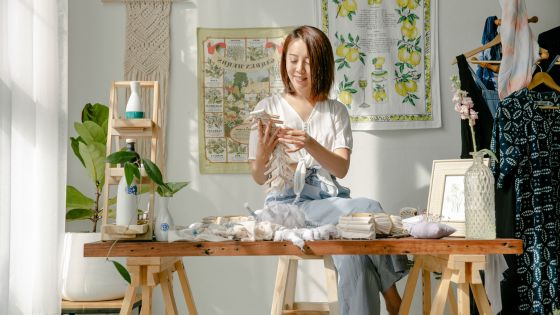For many crafters, having a dedicated space to pursue their passion is a dream come true. A well-designed craft room can provide a haven for creativity, organisation, and inspiration. Whether you’re an avid knitter, a scrapbooking enthusiast, or a jack-of-all-crafts, there are several factors to consider when designing your ideal crafting sanctuary. From the location to the storage solutions, every aspect should be thoughtfully planned to ensure a functional and enjoyable crafting experience.


1. The Location of the Room
The location of your craft room is a crucial consideration that can significantly impact your overall crafting experience. Ideally, you’ll want a space that is relatively quiet and free from distractions, allowing you to fully immerse yourself in your creative pursuits. If you have the luxury of choosing the location, consider a room that receives ample natural light, as this can create a bright and uplifting atmosphere.
If you live in a rural area, you might even consider exploring the concept of treetop cabins – a unique and enchanting option that offers a tranquil retreat amidst nature’s embrace. You can read more about treehouse cabins online, as they offer a truly unique and inspiring setting for your crafting endeavours.
2. Storage Solutions
Crafting often involves an array of materials, tools, and supplies, which can quickly lead to clutter if not properly organised. Adequate storage solutions are essential for keeping your craft room neat, tidy, and efficient. Consider investing in sturdy shelving units, pegboards, or even custom-built cabinets to store your crafting essentials. Label everything clearly to make it easier to find what you need when you need it.
3. Lighting
Proper lighting is crucial for any craft room, as it can affect your ability to see intricate details and prevent eye strain. Natural light is always preferable, but you should also incorporate task lighting, such as adjustable lamps or pendant lights, to illuminate your workspace. Opt for warm, diffused lighting to create a cosy and inviting atmosphere.
4. Comfortable Seating
Since you’ll be spending a considerable amount of time in your craft room, it’s essential to have comfortable seating. Invest in an ergonomic chair or a cosy armchair that provides proper back support and allows you to work for extended periods without discomfort. Consider adding a footstool or a recliner for those moments when you need to take a break and relax.
5. Work Surfaces
Depending on your crafting pursuits, you may require various work surfaces to accommodate different projects. A large table or countertop can serve as your primary workspace, while smaller side tables or rolling carts can provide additional surface area when needed. Consider the height of your work surfaces to ensure they are comfortable for your specific crafting activities.
6. Inspiration and Personalisation
A craft room should be a reflection of your creativity and personal style. Incorporate elements that inspire you, such as artwork, photographs, or a vision board. Display your favourite finished projects or collect samples of fabrics, colours, or textures that spark your imagination. Adding personal touches will make your craft room feel like a truly welcoming and motivating space.
Designing the perfect craft room requires careful consideration of various factors, from the location and storage solutions to the lighting and work surfaces. By taking the time to plan and incorporate elements that cater to your specific crafting needs and personal style, you can create a space that not only fosters productivity but also inspires creativity and joy.

























